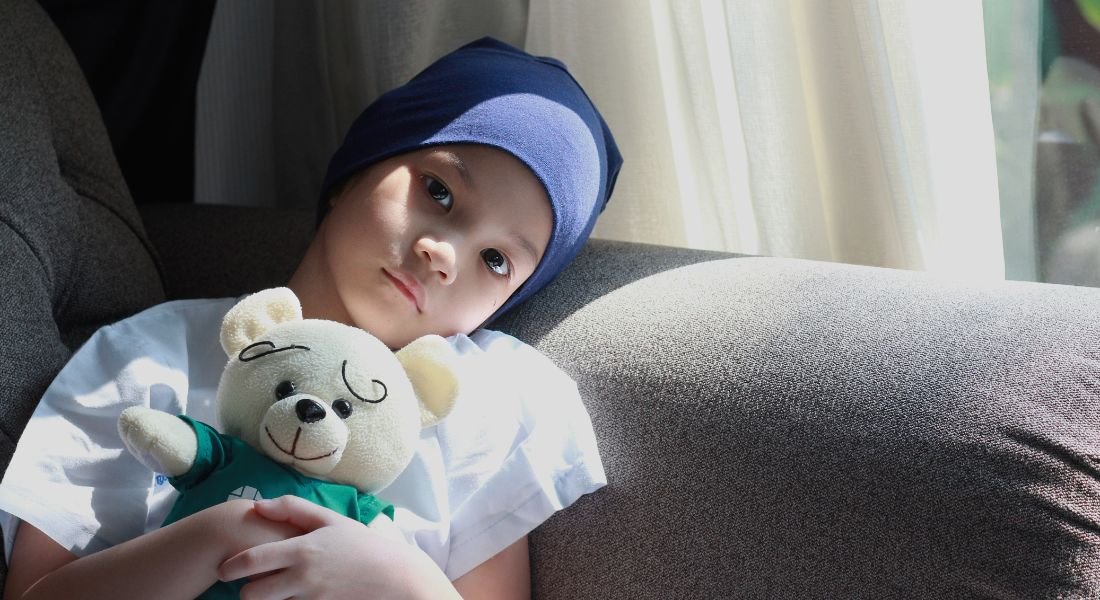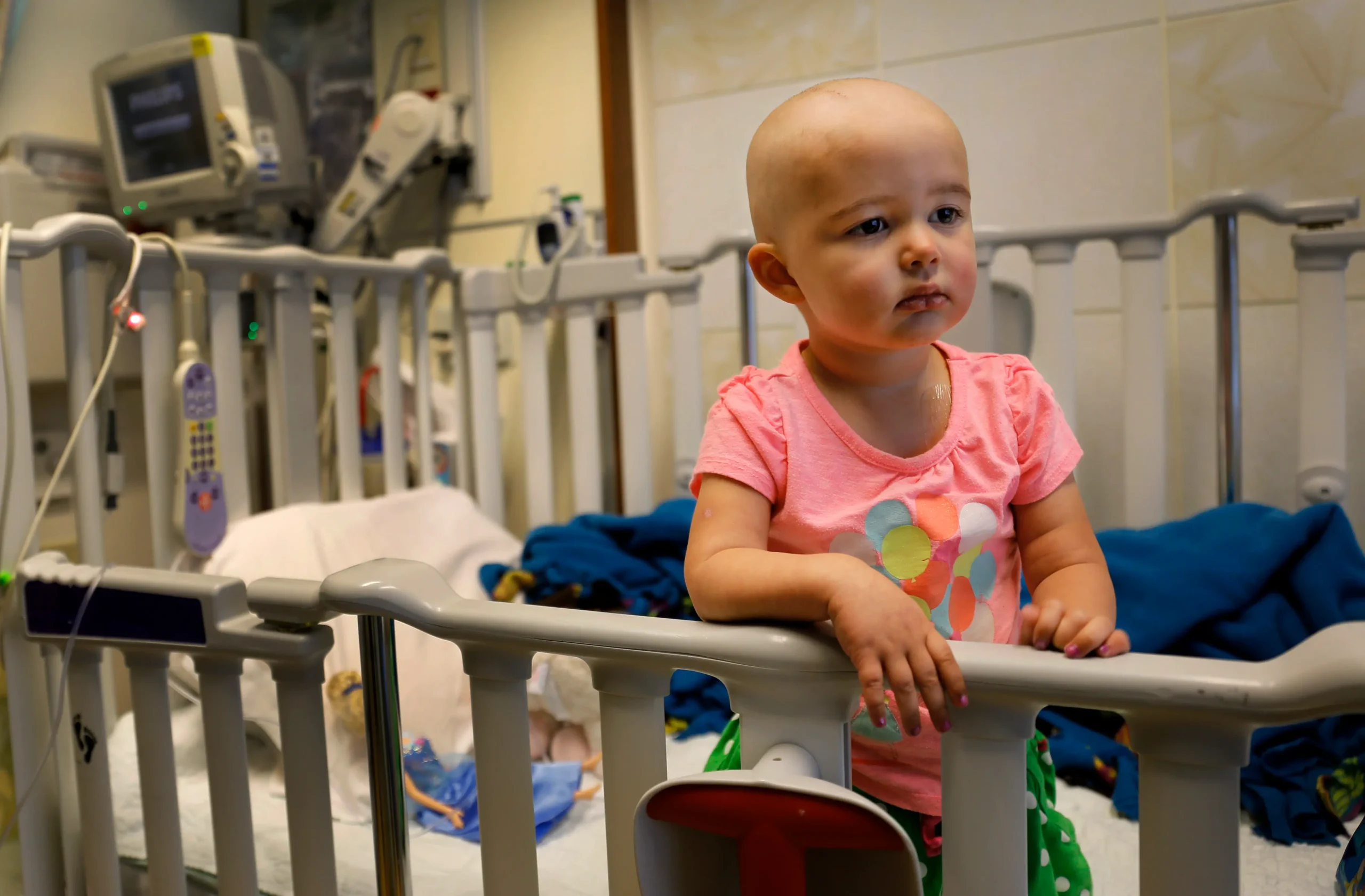Childhood Cancer
Introduction to Childhood Cancer
Childhood cancer, though uncommon, affects individuals of all ages. Early detection and effective treatment significantly improve the chances of a cure. Globally, over 300,000 children are diagnosed with cancer annually, with India accounting for more than 50,000 new cases each year. In Western countries, survival rates for some childhood cancers reach 80-90%, leading to a growing population of survivors with an estimated conservative survival rate of 70%. Specialized pediatric cancer units, managed by multidisciplinary disease management groups, offer the optimal approach to treating these cancers in children, typically defined as those aged 0-14 years, although some centers extend this to 18 years.
Symptoms of Childhood Cancer
While adults may recognize and act upon cancer symptoms in themselves, detecting such signs in children presents a unique challenge. The overlap of potential cancer indicators with common childhood occurrences like play-related injuries, bruises, or typical illnesses can obscure early warning signs. Furthermore, the rarity of childhood cancers compared to adult cancers contributes to the difficulty in initial detection.
However, certain persistent signs and symptoms should raise suspicion and warrant medical attention:
- Unexplained and ongoing weight loss.
- Frequent headaches, particularly when accompanied by morning vomiting.
- Persistent swelling or pain in bones, joints, the back, or legs.
- The presence of a lump or mass, especially in the abdomen, neck, chest, pelvis, or armpits.
- The development of a white appearance in the pupil of the eye or any changes in vision.
- Recurring fevers that are not attributable to infections.
- Excessive or sudden bruising or bleeding.
- Noticeable paleness or prolonged fatigue.

Risk Factors
A risk factor is defined as anything that elevates the likelihood of developing a disease, including cancer. Unlike many adult cancers with identified causes, the specific causes of most childhood cancers remain unknown.
Research indicates that alterations or mutations in the DNA within our cells can play a significant role in the development of cancer cells. Studies suggest that genetic factors contribute to approximately 5-10% of childhood cancers. These genetic predispositions can be either inherited from parents or acquired during a child's development.
Types Of Childhood Cancer
Childhood cancers encompass a diverse range of diseases that differ significantly from cancers in adults. A key distinction lies in their origin: adult cancers predominantly arise in specific organs, while childhood cancers more commonly involve fundamental tissues such as hematopoietic (blood-forming), lymphatic, central nervous system, muscle, and bone tissues.
Raising awareness about the signs and symptoms of childhood cancer is crucial for early diagnosis. Unfortunately, in India, a significant proportion of children with cancer are diagnosed at advanced stages, often after the disease has spread (metastasized). This late presentation underscores the urgent need for increased awareness and earlier detection strategies.
Blood Cancers
Leukemias: Bone marrow cancer with too many immature lymphocytes (like in ALL). Affects blood cells.
Lymphomas: Cancer of the lymph system. Includes often curable Hodgkin lymphoma and NHL (prognosis varies).
Brain Tumors
These occur when abnormal cells develop in the brain or spinal cord tissues. The brain controls vital body functions, and the spinal cord links the brain to the body's nerves. These tumors are a common childhood cancer. Some are non-cancerous (benign), and surgery can cure some children.
Bone Cancers
Bone cancer is uncommon and encompasses various types. Osteosarcoma and Ewing sarcoma are among the bone cancers most frequently observed in children and young adults.
Wilms' Tumor
A kidney cancer primarily affecting young children (ages 2-4), distinct from adult kidney cancers. Early diagnosis leads to very high cure rates.
Rhabdomyosarcoma
Typically starts in muscles connected to bones, aiding movement, but can occur in various body locations. It's the most frequent soft tissue sarcoma in children.
Retinoblastoma
A rare eye cancer affecting young children, typically under 5 years old. Early detection allows for successful treatment and often preservation of vision. It can affect one or both eyes. Bilateral retinoblastoma (both eyes) is usually diagnosed before age one, while unilateral (one eye) is often found later (ages 2-3). Early recognition of signs and symptoms is crucial for saving sight and life.

Coping & Support
Witnessing a child battle cancer is undeniably traumatic, naturally leading to parental stress, anxiety, and future fears. However, a parent's strength and support are vital throughout this journey.
Here are ways parents can support their child:
- Engage with the Pediatric Oncologist: Have detailed conversations with the doctor, clarifying all doubts to understand the best course of action for your child. Comprehensive knowledge about the cancer and treatment options fosters confidence in decision-making. Inquire about all treatment possibilities and financial aspects.
- Connect with Childhood Cancer Survivors: Talking to others who have navigated similar experiences can be helpful and encouraging. Ask the doctor about hospital support groups and explore online communities.
- Express Your Emotions: Find empathetic friends or family members to share your thoughts and feelings. Seek a referral from your doctor for a counselor specializing in childhood cancer patients and survivors.
- Lean on Your Support Network: Friends and family can offer invaluable assistance during cancer treatment.
- Embrace the Future: Post-therapy, most children can resume normal lives, pursue their aspirations, and inspire hope in other young cancer patients. Survivor support groups offer mutual aid and encouragement.
In essence, persistent childhood signs and symptoms should never be dismissed. Accurate and timely diagnosis coupled with effective treatment are paramount in combating childhood cancer, improving survival rates, alleviating suffering, and potentially reducing treatment costs. Consulting a pediatrician and accessing top-tier treatment centers providing comprehensive pediatric cancer care are equally crucial.

